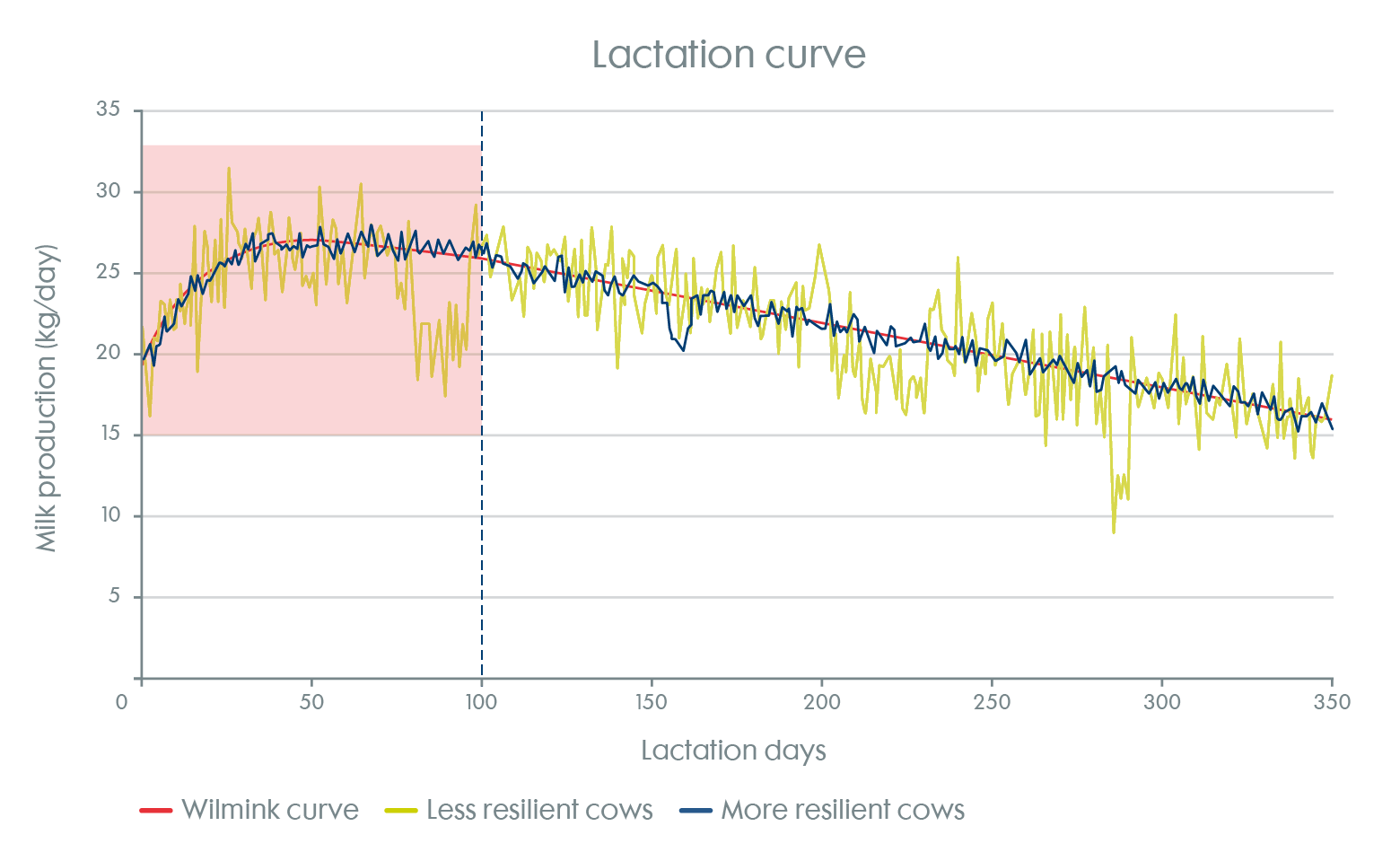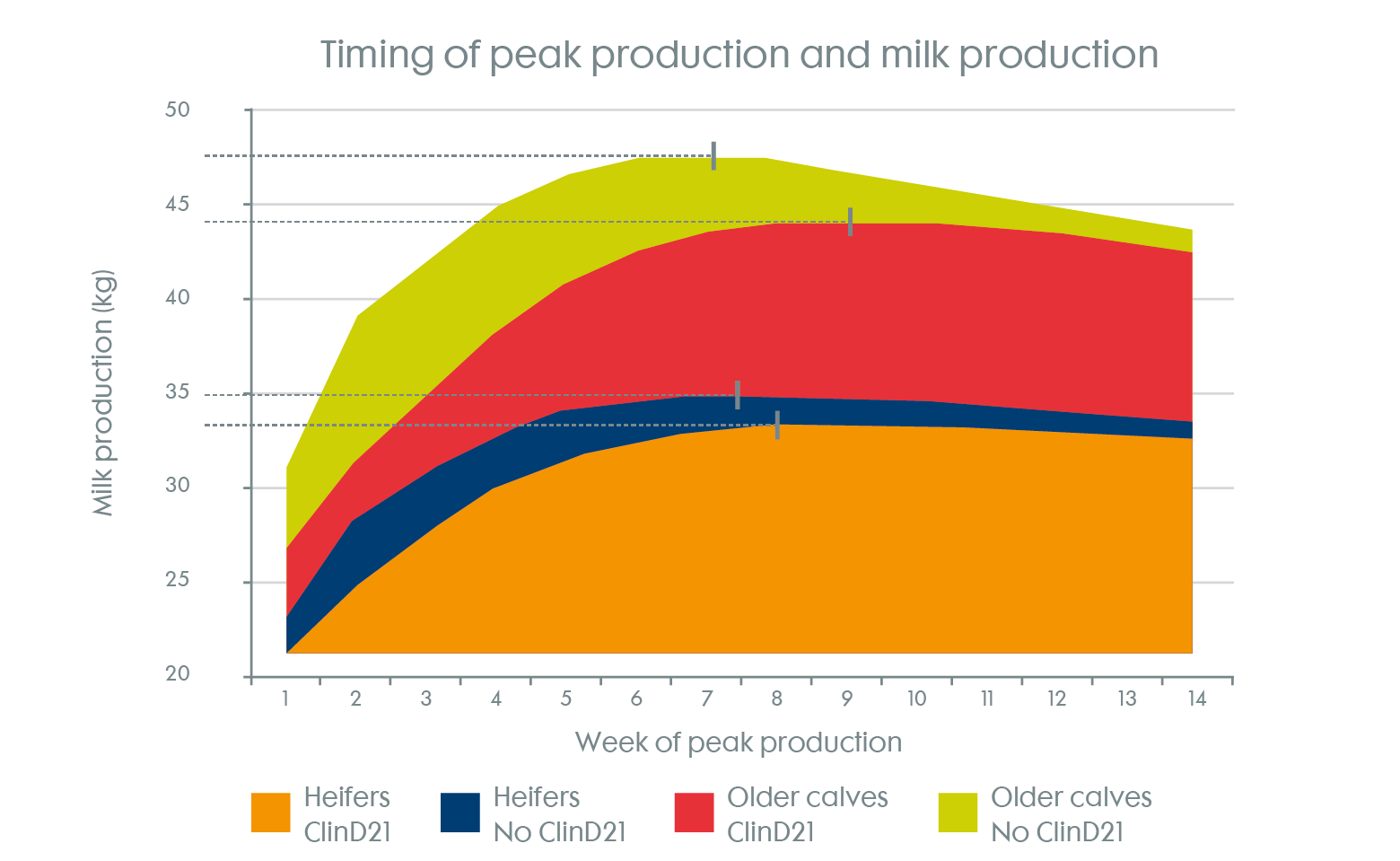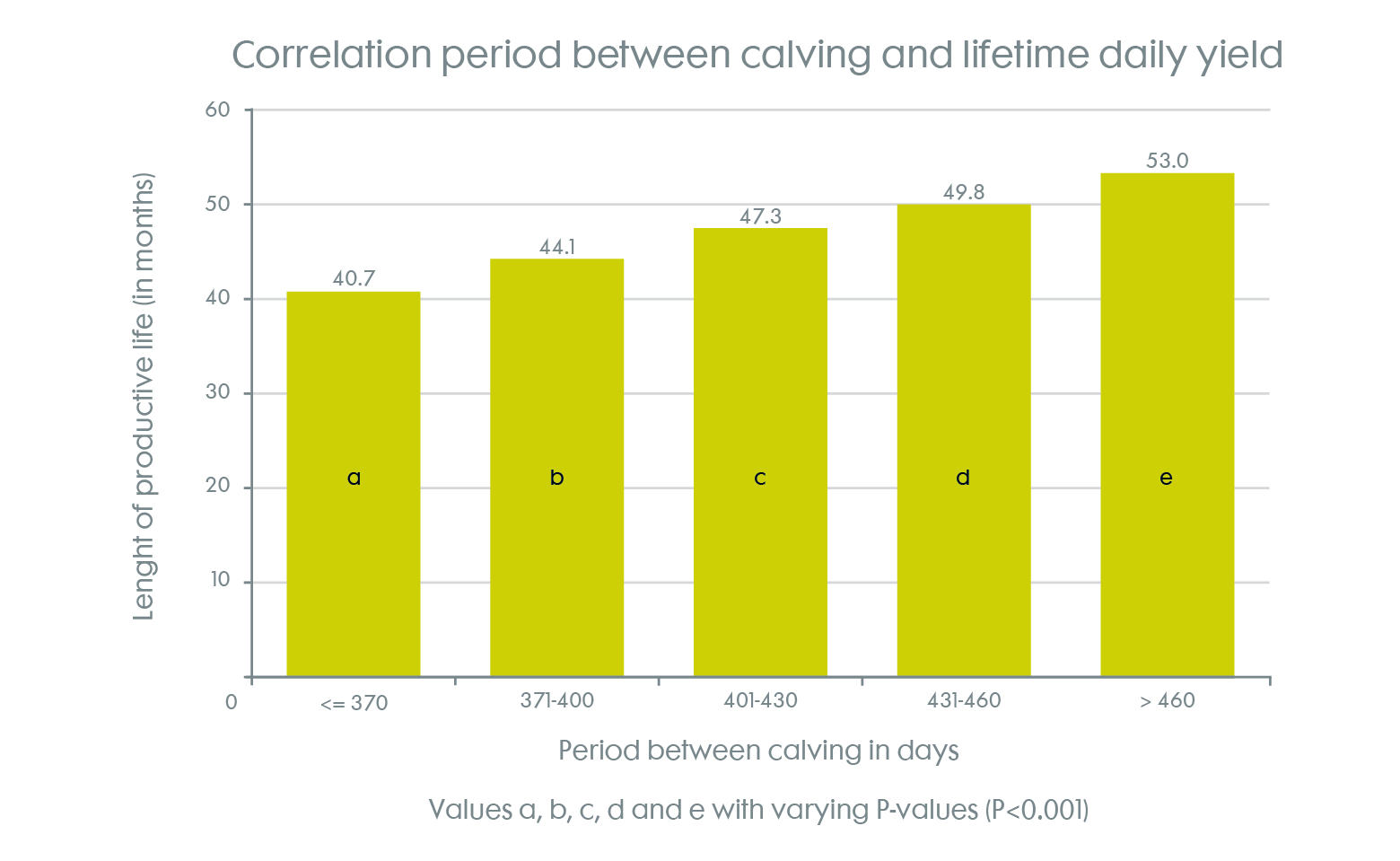The HealthyLife program translates the latest scientific insights about the transition period into practical tips and protocols. This article will tell you how to improve LDY and yield on your dairy farm. The LDY indicates the amount of milk produced (in kilograms) per day for the cow. Total milk production is therefore related to age. To achieve the best possible LDY and maximum return, the following four key figures are monitored within the HealthyLife program:
The 4 key figures for HealthyLife
- Heifers are at 73% of parent calf cows at their peak production.
- There is <5% loss rate within the first 100 days of lactation.
- Cows reach their peak production between 40 and 60 days into the lactation.
- Loss of heifers in the first lactation is <15%.

Healthy Life | How to identify a resilient cow
A robust cow will live longer, easily provide an extra lactation, and keep forced culling low. Yet, at HealthyLife, we prefer to talk about a resilient cow rather than a robust cow, because robust does not necessarily mean that it can handle change easily. Wageningen research defines resilience as the ability to cope well with small changes in the environment. Based on large amounts of data (including milk production), dairy cows can be classified according to their level of resilience.
In figure 1, resilient cows show a smaller daily variation in milk production compared to less resilient cows. As these resilient cows are better able to deal with metabolic challenges in the transition period, milk production also declines more slowly, reaching peak production between 40 and 60 days.
 Figure 1. Wilmink (lactation) curve of resilient and less resilient cows (Adapted to T. V. L. Berghof, M. Poppe and H. A Mulder, 2019)
Figure 1. Wilmink (lactation) curve of resilient and less resilient cows (Adapted to T. V. L. Berghof, M. Poppe and H. A Mulder, 2019)
Healthy Life | Peak production and loss of heifers as a starting point
The study by Carvalho et al., 2019 (Figure 2) based on more than 7,500 dairy cows shows that the timing of peak production is a good indicator of health. It shows very clearly that 1 clinical condition already results in delayed peak production and significantly lower milk production in both heifers and older calves.
 Figure 2. Effect of 1 clinical condition in the first 21 days after calving on the timing of peak production and milk quantity for heifers and older calves (adapted from Carvalho et al. 2019)
Figure 2. Effect of 1 clinical condition in the first 21 days after calving on the timing of peak production and milk quantity for heifers and older calves (adapted from Carvalho et al. 2019)
Peak production also tells us something about successful rearing. If heifers go through a normal transition period (without clinical conditions or difficult births), a low peak production can be explained by limited development in rearing, resulting in relatively more Feed Unit Milk and Digestible Crude Protein being used for growth rather than milk production. The goal is to have heifers peak between 70% and 75% of the herd average.
In addition to peak production, heifer loss rate is a good parameter to measure the success of youngstock rearing and resilience. A loss rate of below 15% is the goal. In Germany, this number is considerably higher. There, research among 43,000 cows culled at high-yielding farms showed that 29% of heifers are culled during the 1st lactation. A quarter of these animals were even culled in the first 30 days of lactation. Taking into account the rearing costs of a heifer, including labour, of over 2000 EUR (source: Jonkos calculation program), this represents a hidden cost of 5,000 - 10,000 EUR per year for a dairy farm with 100 dairy cows.
Healthy Life | Need for a cow-specific period between calving?
In recently published German research, over 20,000 dairy cows were followed for 8 years across nearly 30 farms. Very interestingly, in terms of fertility, it emerged that a longer period between calving is associated with higher lifetime daily yield (Figure 3).
 Figure 3. Productive lifespan of 26,212 animals with at least 3 lactations related to time between calving (adapted from Römer et al., 2020)
Figure 3. Productive lifespan of 26,212 animals with at least 3 lactations related to time between calving (adapted from Römer et al., 2020)
It also revealed that cows that calved 3 times in 5 years had higher production (55,264 kg milk) compared to a group that calved 5 times (53,757 kg milk). This resulted in a higher lifetime daily yield: 21 vs. 20 kg milk/day. If the economic aspect is taken into account as well, this study shows that it's important to aim for an LDY of 20 kg of milk. A short period between calving is therefore not always the most ideal scenario. Especially when you include rearing and health costs in addition to feed costs.
So, in addition to making improvements to rearing, fertility choices can also have a substantial impact on LDY. Finding the optimum period between calving not only leads to more efficiency, but also to greater job satisfaction.
Healthy Life | Useful KPIs telling you where you need to improve
The 4th and final key figure is to aim for a lower loss rate in the 1st 100 days of lactation. This key figure can be easily calculated and is an objective measure of how well the transition period is going. After all, losses in the first 100 days of lactation are often related to the dry period. Experience shows that the dairy farmer's perception of this parameter is often different from reality and so leads to an interesting discussion. The goal is to have a loss rate below 5%.
Getting started: Complete the HealthyLife calculator
In summary, the 4 key figures from the HealthyLife program provide a quick analysis of where improvements can be made to improve lifetime daily yield and return on your dairy farm. Do you want to get started? Complete our online HealthyLife calculator. The outcome of the calculator will give you concrete tips & tricks to increase lifetime daily yield. The result? From a healthy business to maximum returns. You do the math!
